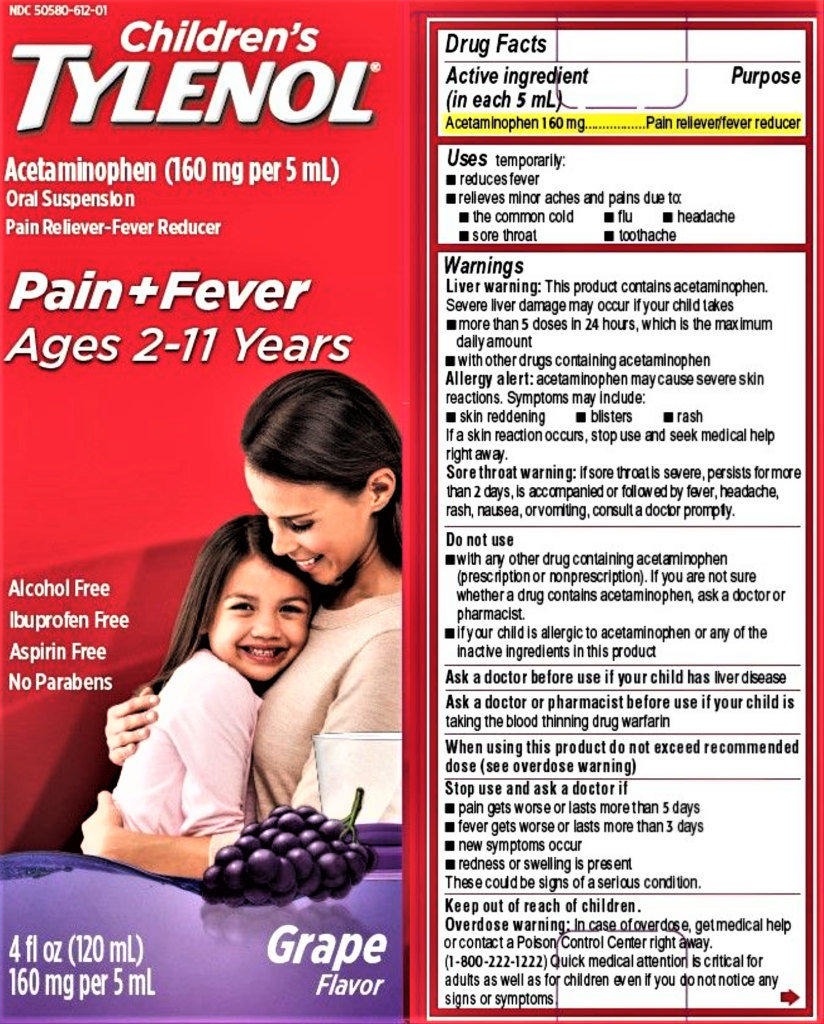5.11 Weight-Based Calculations
[latexpage]
Liquid medications are often prescribed based on the patient’s weight. Dimensional analysis can be used to determine the amount of liquid medication the patient will receive based on their weight, the provider order, and the concentration of medication supplied.
Practice Problem: Weight-Based Calculations
Patient Information:
Name: Aidan Smith, DOB: 5/09/20xx, Age 4, Allergies: NKDA, Weight: 22 pounds
Prescription: Tylenol 15mg/kg PO every 4-6 hours for pain or fever
Medication Supplied: See Figure 5.12[1] for the drug label of the medication supplied.

Aidan had his last dose of Tylenol eight hours ago and now has a fever of 38 degrees Celsius. Calculate the amount of Tylenol you will prepare and administer to Aidan using dimensional analysis.
1. Review the medication label. We see that acetaminophen (Tylenol) is supplied in a concentration of 160 mg in 5 mL.
2. Set up the equation by starting with the goal unit for which we are solving, which, in this case, is milliliters of liquid medication to administer:
\[
mL~=~?
\]
3. Set up the first fraction by matching the numerator to mL. Place in the known amount of mL from the drug label, which is 5. Add 160 mg to the denominator because the medication supplied has a known concentration amount of 160 mg in 5 mL:
\[
mL~=~\frac{5~mL}{160~mg}
\]
4. Create the second fraction with the intent to cross out units by placing mg in the numerator. Look for other important information in the problem related to mg. The prescription is for 15 mg of acetaminophen (Tylenol) for each kg of weight. Add 15 the numerator and 1 kg in the denominator because 15 mg of Tylenol are ordered for every 1 kg of patient weight:
\[
mL~=~\frac{5~mL}{160~\cancel{mg}}~x~\frac{15~\cancel{mg}}{1~kg}
\]
5. Create the third fraction with the intent to cross out kg, so place kg in the numerator. Look for important information in the problem related to kg. The patient’s chart tells us their weight is 22 pounds. Add 1 kg to the numerator and then place 2.2 lb (based on a known equivalency) in the denominator:
\[
mL~=~\frac{5~mL}{160~\cancel{mg}}~x~\frac{15~\cancel{mg}}{1~kg}~x~\frac{1~kg}{2.2~lb}
\]
6. Place lb in the numerator of the fourth fraction with the intent to cross out pounds. Look at the information provided and see that the patient weighs 22 pounds. Add 22 pounds in the numerator and 1 in the denominator with the intent to cross off units:
\[
mL~=~\frac{5~mL}{160~\cancel{mg}}~x~\frac{15~\cancel{mg}}{1~kg}~x~\frac{1~\cancel{kg}}{2.2~lb}~x~\frac{22~lb}{1}~=
\]
7. Cancel out units diagonally:
\[
mL~=~\frac{5~mL}{160~\cancel{mg}}~x~\frac{15~\cancel{mg}}{1~kg}~x~\frac{1~\cancel{kg}}{2.2~\cancel{lb}}~x~\frac{22~\cancel{lb}}{1}~=
\]
8. After canceling out similar units, we are left with mL, our goal unit, so we can complete the calculation. Multiply across the numerators and the denominators, and then divide the final fraction for the answer:
\[
mL~=~\frac{5~mL~x~15~x~1~x~22~=}{160~x~1~x~2.2~x ~1~=}~~\frac{1650~mL}{352} ~=~\frac{1650~mL}{352}~=~{4.6875~mL}
\]
9. Round your final answer. Because the patient is a child, round the final answer to the hundredth, so the final answer is 4.69 mL.
Review module 1.12 within SWTC's Dimensional Analysis in Nursing Page for more information about solving weight-based problems.
Practice weight-based calculations with the interactive learning activity below.
- This work is a derivative of tylenol-01.jpg, courtesy of the U.S.National Library of Medicine. This image is included on the basis of Fair Use. ↵

